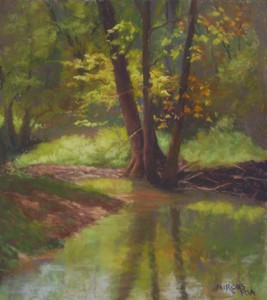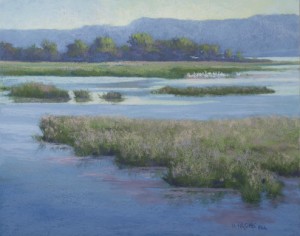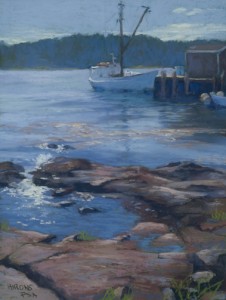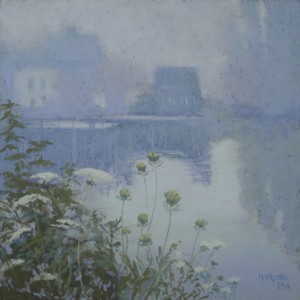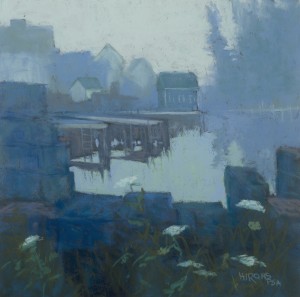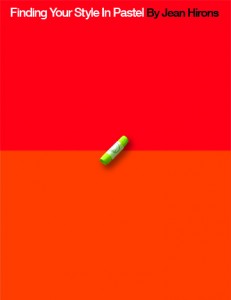I define a center of interest composition as one in which the COI is very prominent. I am less likely to create this type of composition, because, for some reason, I’m generally less drawn to this in nature. But, in this case, the light was hitting a stream and trees in a beautiful manner that really caught my attention. The center of interest is the area to the left of the trees where the light is brightest and the greens are reflecting into the water. For this painting, which I did as a demo, I began with a loose-wash underpainting using watercolor. The primary color is yellow green, with smaller amounts of complementary red violet. I began with majenta watercolor in the background to provide contrast, then added more local color in other areas. I wanted to be able to leave the background fairly loose and unfinished, concentrating the pastel in the center of interest. As frequently happens, however, I added pastel everywhere as it just didn’t look complete! However, the most saturated pieces of color are definitely in the sunlit tree and grasses. I used grayed Giraults for the background, and very soft Schminckes and others soft pastels for the center of interest. I hope that the difference in composition is clear from these two paintings and my approach to the underpaintings as well.
Which kind of painter are you? Do you favor one type of composition over another? Do you give thought to the type of composition when deciding on the approach to an underpainting (when one is done). I’ll share other painting where no underpainting is used at all, but the compositional decisions are still critical.

